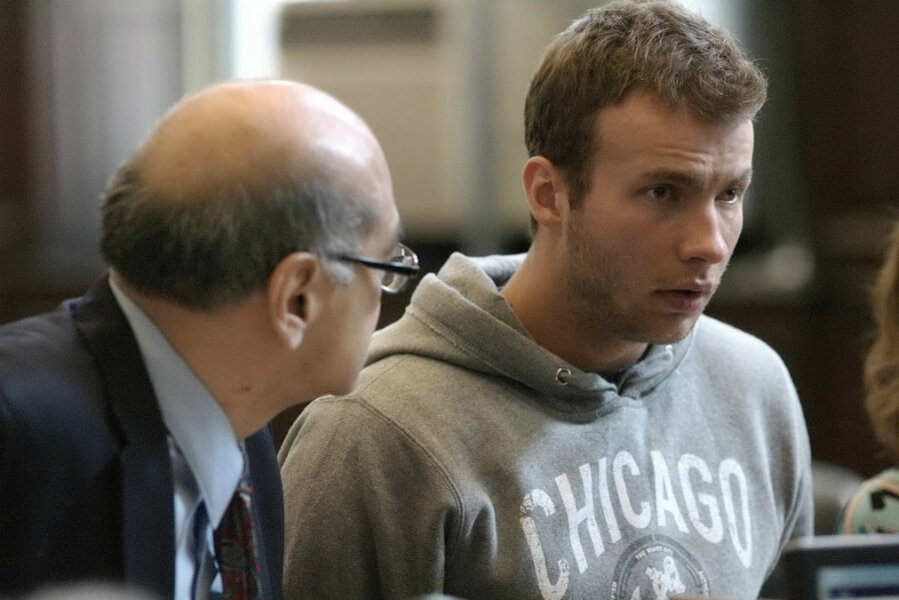Brooklyn Bridge caper: What is it with New York and thrill seekers?
Loading...
| NEW YORK
New York’s iconic Brooklyn Bridge, its latticework of steel-wire suspension cables – the first of its kind ever built – has been the site of daredevils in search of snapshots this summer, as well as intrepid artists and activists trying to make a statement.
The trespassers, too, have caused a bit of stir with the New York Police Department and city officials the past month, especially since the city remains on guard for acts of terror.
The latest incident came Sunday when a Russian man bypassed security gates and shimmied up one the historic bridge’s giant cables at high noon. The man, Yaroslav Kolchin, a visitor from Moscow, reached the top of one of the granite, Gothic-arched towers and then walked back and forth on its landing, snapping photos of the city with his iPhone.
The stunt comes just a month after two German artists, Matthias Wermke and Mischa Leinkauf, scaled both of the bridge’s 276-foot towers and replaced their American flags with handmade, all-white replicas during a 3 a.m. caper on July 22. The stunt embarrassed the NYPD and led to calls for greater security measures at the busy bridge, which includes an often-crowded center walkway.
As Mr. Kolkin ascended the suspension cables midday Sunday, police patrolling the bridge noticed immediately. Additional units, including harbor patrol boats and an NYPD helicopter that hovered at tower level, were dispatched to the scene, but the thrill-seeker simply stepped his way back down to the bridge’s walkway, where he was met immediately and arrested without incident.
Kolkin was charged with reckless endangerment, criminal trespass, and obstructing governmental administration, and held on a $5,000 bond. His defense attorney, Paul Liu, says he works in advertising and came to NYC with a Russian tour group.
The city’s iconic structures have more and more become the targets of a variety of thrill seekers out to make a name for their exploits – especially in a social media era in which unusual photographs from dizzying heights are celebrated and followed by tens of thousands of followers.
Like the graffiti exploits of a bygone era, a new breed of “outlaw Instagrammers” have made New York City a playground of off-limits photo ops, according to a report in New York Magazine. They “make their work in the cracks of the urban landscape” and then post their creative photos online.
The Berlin-based artists who replaced the American flags atop the Brooklyn Bridge’s towers with white replicas on July 22 said they were commemorating the bridge’s Berlin-born architect, John Roebling, who died that day in 1869.
“We saw the bridge, which was designed by a German, trained in Berlin, who came to America because it was the place to fulfill his dreams, as the most beautiful expression of a great public space,” Mr. Leinkauf told The Guardian, a British daily.
Critics have called their work “post graffiti,” and some of their other stunts have included scaling skyscrapers in Tokyo and Prague and dangling precariously from famous bridges. They film their daredevil work and exhibit them at various art exhibitions.
On Thursday last week, however, the duo finally returned the American flags to authorities at the US Embassy in Berlin, The Wall Street Journal reported.
Police Commissioner Bill Bratton told the Journal that such stunts underscore the city’s need for “staying very focused” on the city’s landmarks, and on “the acquisition of better capabilities to predict and forestall something happening."
While thrill seekers attempt to make a name for themselves in the media capital of the world, the threat of terrorism remains acute in the city, Mr. Bratton said. John Miller, deputy commissioner for intelligence and counterterrorism for the NYPD, said Thursday that the caper "really made us look at that bridge ... and say, 'Where do we have to get in terms of technology so we have more sensors and trip wires?' "






